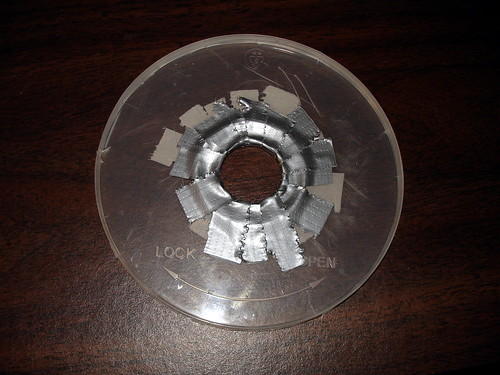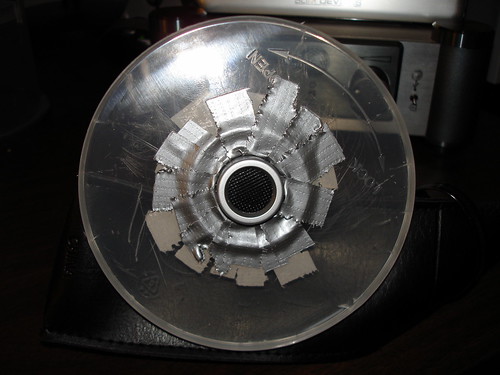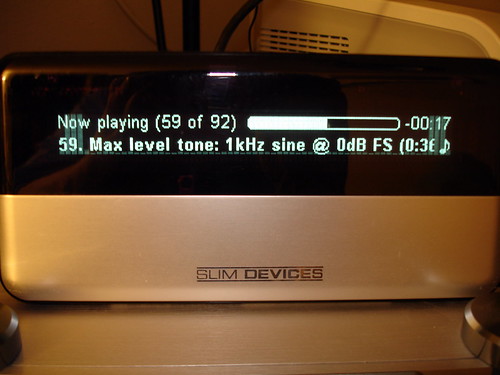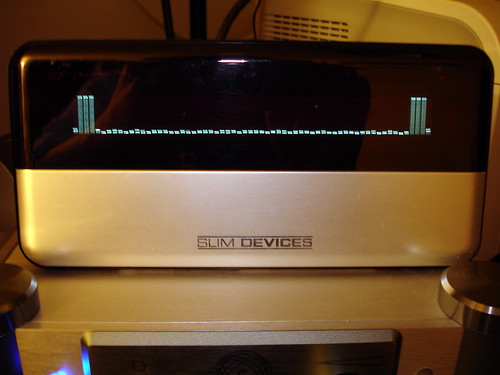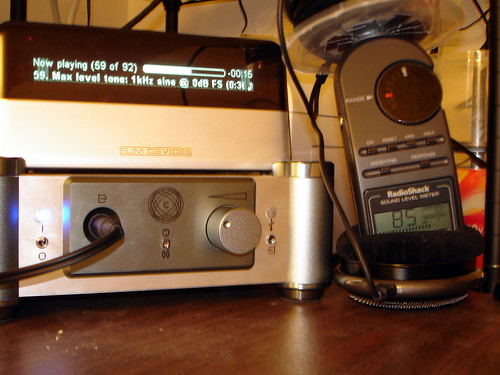Quote:
Originally Posted by rsaavedra /img/forum/go_quote.gif
I think setting the absolute maximum to be 85 is too conservative.
|
I quite agree. In general, I think your statement, "to be around 85dB for the loud passages of a song; can go slightly higher than that, but just very few times", is a pretty good rule, but because of widely disparate nature of compressed pop music and the very high dynamic range of some classical and chamber music, it's pretty hard to come up with anything much better. But, I do agree with your comments.
Quote:
Originally Posted by Sordel
Anyone buying a headphone amplifier is pretty much going to expect it to drive loud, so from a certain perspective I can see that you would want to supply a lot of volume.
|
Yeah, that's a problem, and another important message we should have up our "Head-Fi Culture" sleeve: amps aren't about getting loud, but about being clear and clean. As you point out, for our (and anyones) headphone amp to be universally usable, we have to be able to accomodate any headphone regardless of impedance and efficiency. That means we can play some cans blazingly loud.
Quote:
Originally Posted by Sordel
I'm wondering whether there's more that you can do at your end, even if it's just supplying an A4 sheet printed with typical volume levels for different types of headphone at different gain levels. .... You wouldn't have to drop down into model numbers for this exercise: just give guidance and explain what one is trying to achieve with headphone listening levels. Also, of course, remember to add that you don't guarantee that hearing can't be damaged at lower sound levels ... you don't want to get sued for trying to do the right thing!
|
And, of course, there's the rub. If we offer specific proceedures and someone follows (or believes they are following) our instructions and still gets hearing damage, then they might sue us (please no, knock on wood, cross fingers, wave a dead cat around my head). It's true that there's a "damned if we do and damned if we don't" kind of situation here. The truth is, though, that it's pretty much impossible to do what you suggest; to do it at all effectively you do have to get down to the specific model number and it's performance coupled with the specific amp and what the gain settings are. It would be a massive undertaking that would have to be monitored and maintained over time for new cans, and you'd have to measure all the cans out there. No, just no do-able.
Maybe the best advice on this subject that I've heard (barring the Rat Shack meter thing, which is very good) is what Todd (TTVJ) started
saying to folks when he used to work at HeadRoom: "Turn it down till it's too quiet, and then tick it up a small notch and leave it there." One of the insidious usage modes is to keep touching the volume up as you listen over time. "Just a little louder, and a little more, and a little more," and pretty soon you're in trouble. The worst situation is when you are in a position to listen for long periods of time, and you let your volume creep up. It's nice to have a job where you can listen while you work, but it's also the time when you can get a little lost in the music and not take care of monitoring your volume.
Maybe the best thing I can tell you is tell you what I said in the beginning: What I've found is that fidelity is at it's best at a "normal" listening level. Your ears are really dialed in for normal speach levels and below. Loud noises are rejected from our auditory system to the best of our body's ability. I can tell when it's too loud because my listening is not at it's best, so I try to keep it down---not because it save my ears (though it does) but because I want to listen with the best that my body and hearing has to offer ... and for a long time to come.
Bottom line: Loud just doesn't sound as good.
Oh, and Graham, nice work, dude. Great post. I highly encourage folks to get a SPL Meter. Not only to get an internal calibration on what good listening levels sound like, but because that meter comes in real handy setting up your stereo gear.




